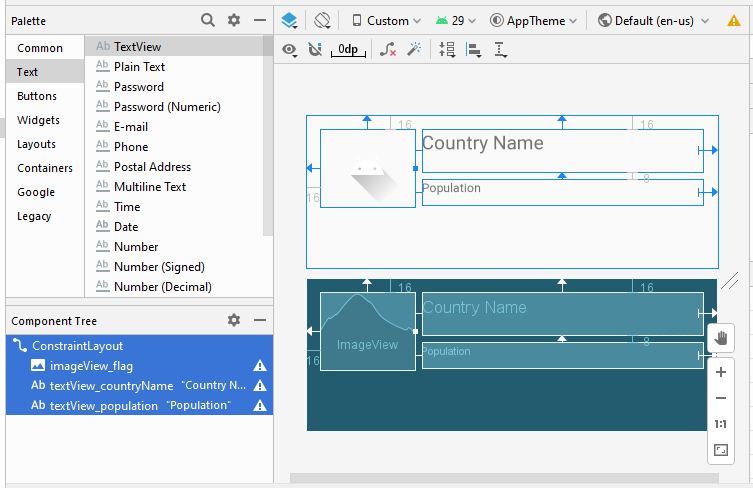

Consider you have an array of strings you want to display in a ListView, initialize a new ArrayAdapter using a constructor to specify the layout for each string and the string array −ĪrrayAdapter adapter = new ArrayAdapter(this,R.layout.ListView,StringArray)

By default, ArrayAdapter creates a view for each array item by calling toString() on each item and placing the contents in a TextView. You can use this adapter when your data source is an array. When set to false, the ListView will not draw the divider after each header view. When set to false, the ListView will not draw the divider before each footer view. Specifies the reference to an array resource that will populate the ListView. This is drawable or color to draw between list items. This is the ID which uniquely identifies the layout. ListView Attributesįollowing are the important attributes specific to GridView − Sr.No We will see separate examples for both the adapters. The common adapters are ArrayAdapter, Base Adapter, CursorAdapter, SimpleCursorAdapter, SpinnerAdapter and WrapperListAdapter. The ListView and GridView are subclasses of AdapterView and they can be populated by binding them to an Adapter, which retrieves data from an external source and creates a View that represents each data entry.Īndroid provides several subclasses of Adapter that are useful for retrieving different kinds of data and building views for an AdapterView ( i.e. Adapter holds the data and send the data to adapter view, the view can takes the data from adapter view and shows the data on different views like as spinner, list view, grid view etc. List ViewĪn adapter actually bridges between UI components and the data source that fill data into UI Component.

The list items are automatically inserted to the list using an Adapter that pulls content from a source such as an array or database. Android ListView is a view which groups several items and display them in vertical scrollable list.


 0 kommentar(er)
0 kommentar(er)
